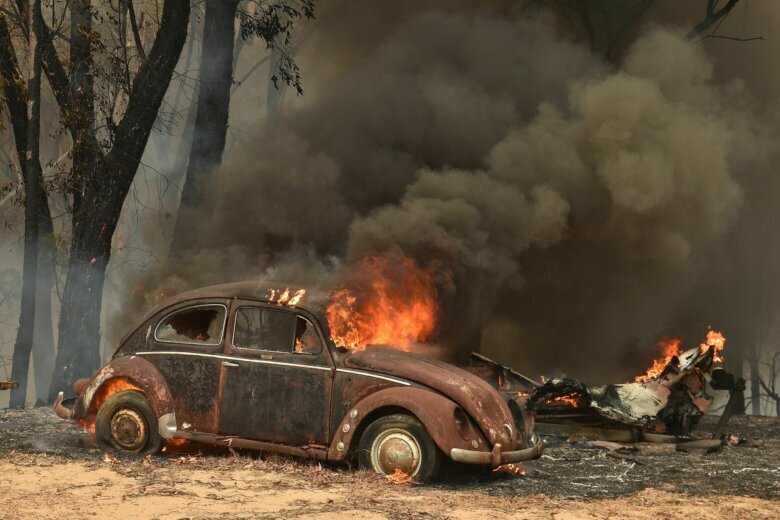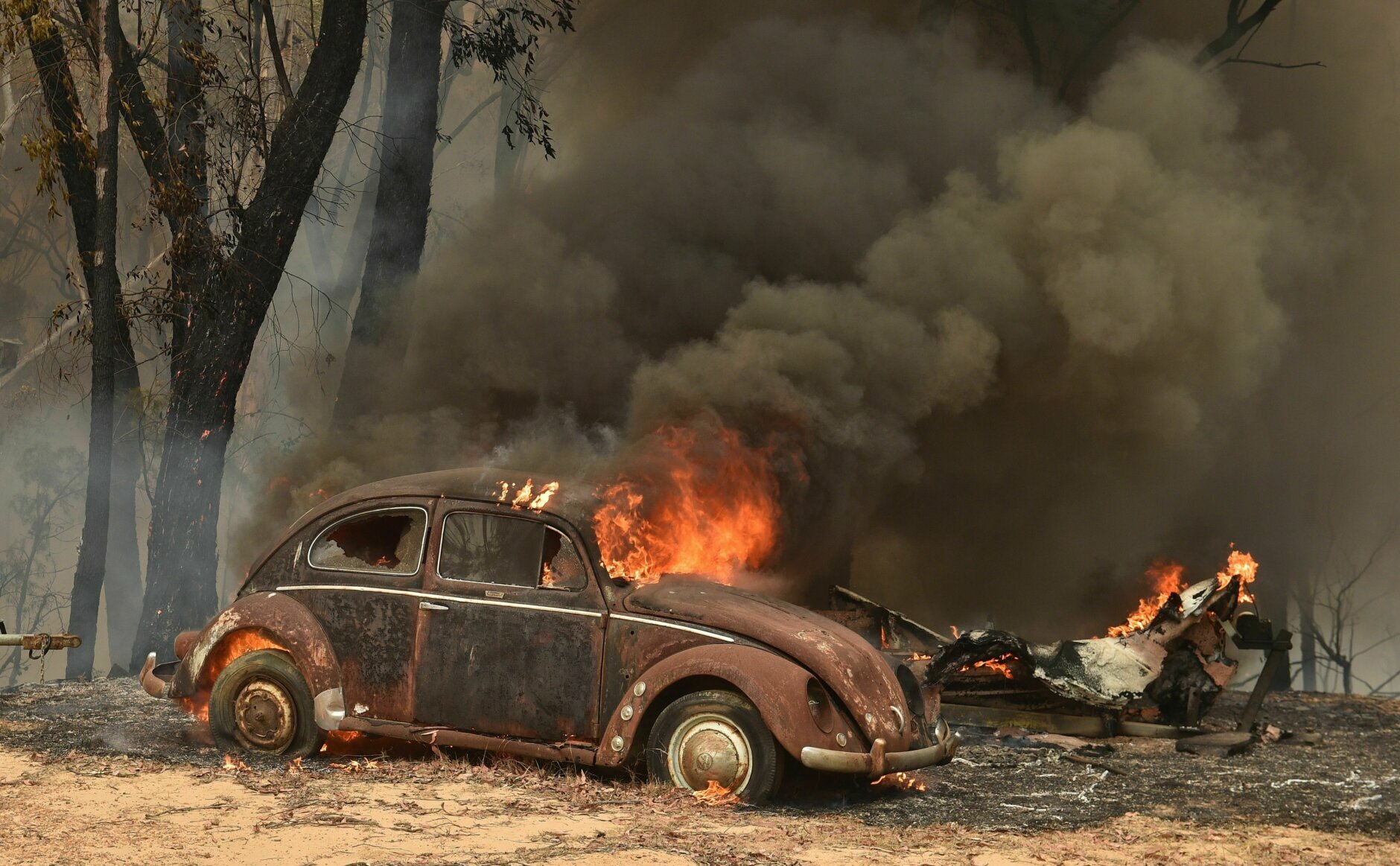
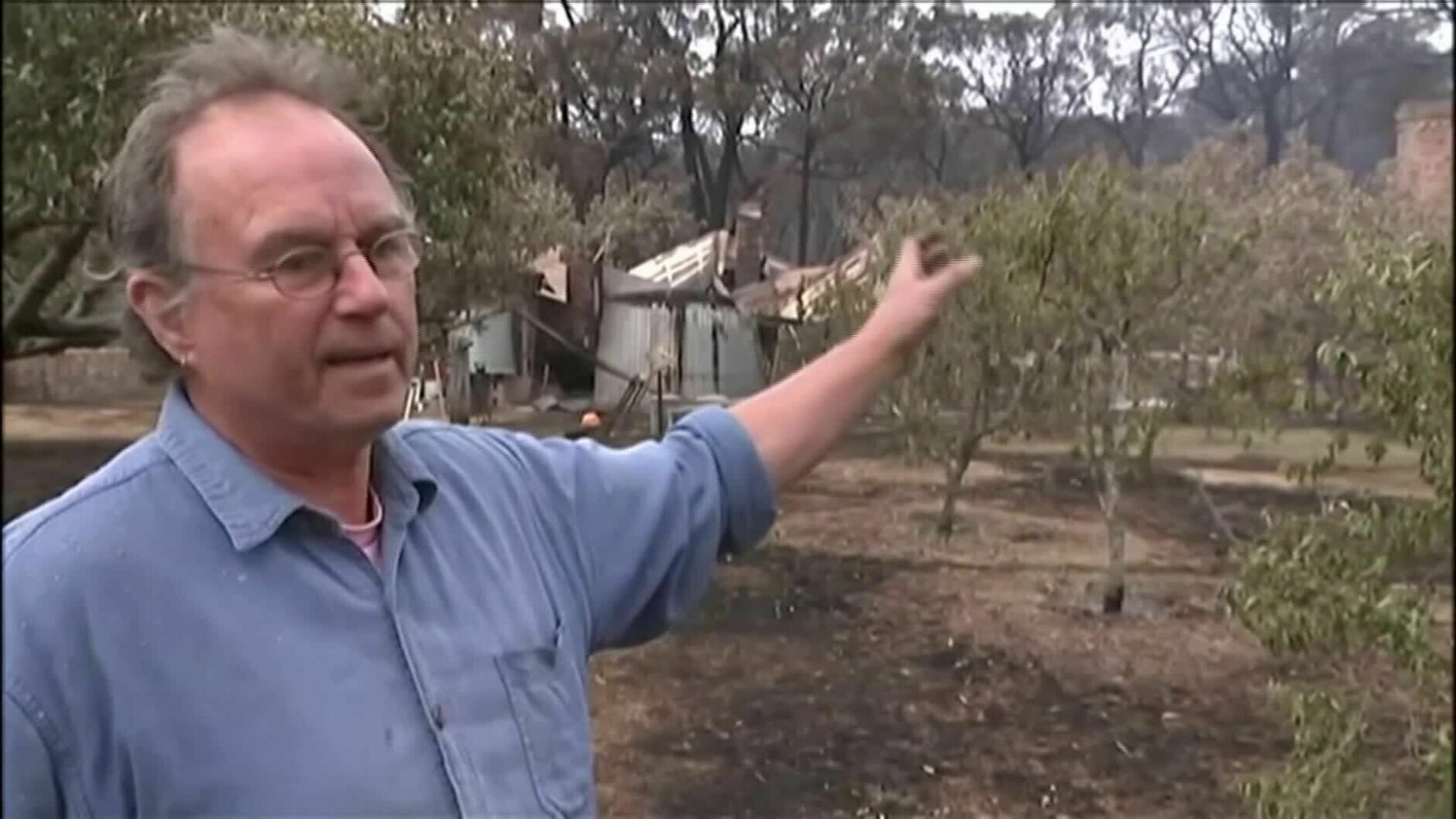
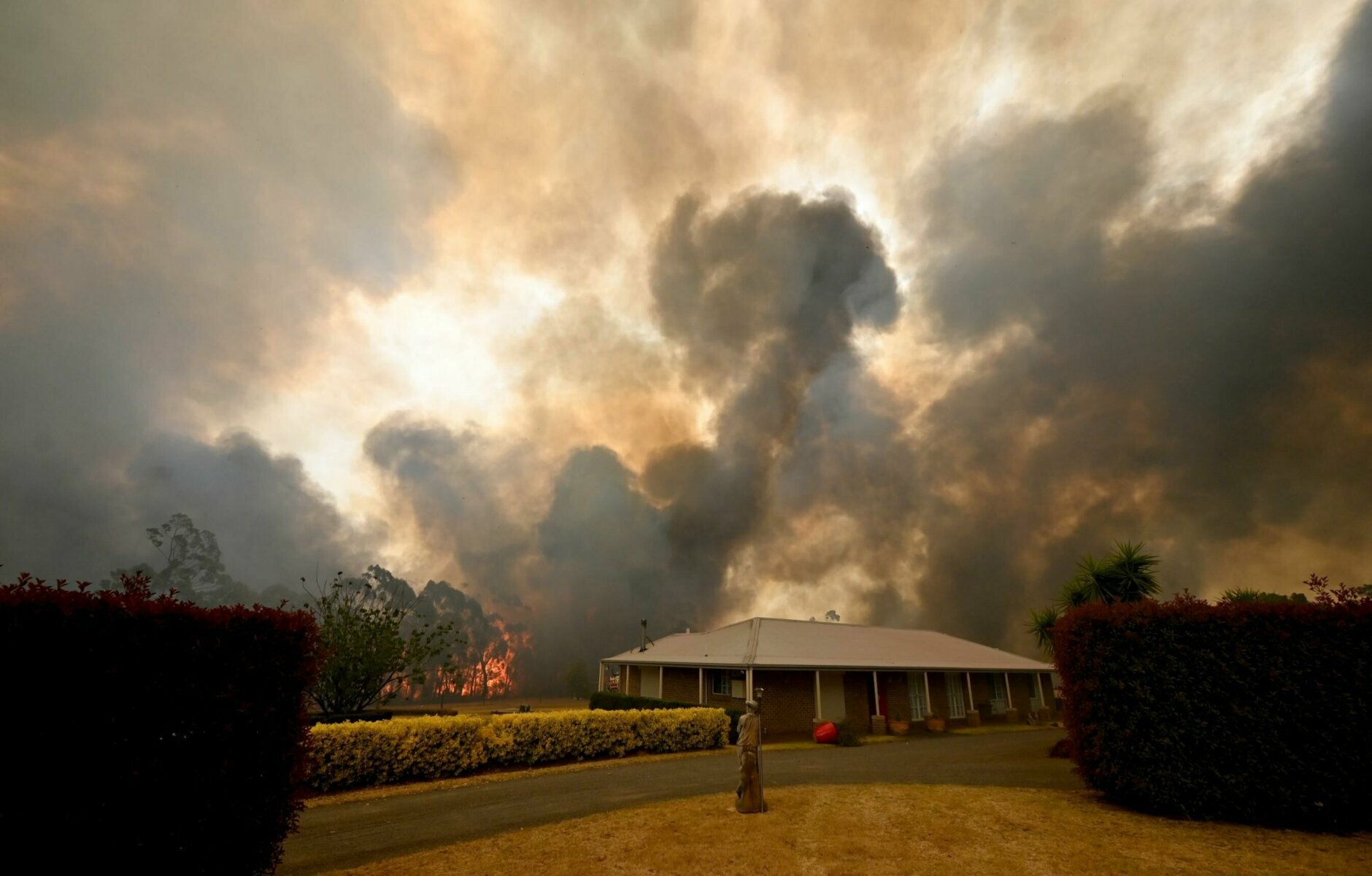
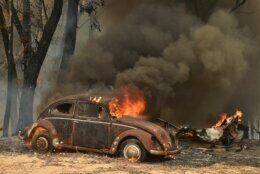
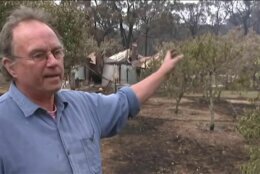
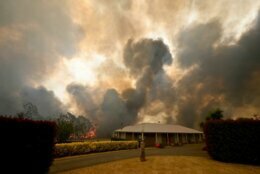
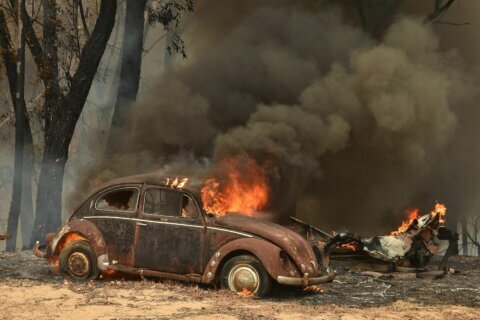
As bushfires continue to burn out of control across Australia — engulfing whole towns and leaving little behind but for the charred remains of people’s homes — remarkable stories of survival have surfaced from the state of New South Wales (NSW).
Steve Harrison, a 67-year-old potter, hid in a makeshift kiln to insulate him from the flames as his property was destroyed. He told the Australian Broadcasting Corporation (ABC) that he had stayed behind to defend his home in Balmoral, a community south-west of Sydney that has been devastated by the blazes.
“I ran to my ute (pickup truck) but my garden was already on fire, the driveway was on fire, the road was on fire so I couldn’t evacuate,” Harrison said. “The day before I had actually built myself a small kiln down the back — a coffin-sized kiln — just big enough for me to crawl inside.”
Harrison hid in the kiln for half an hour as the “firestorm” raged.
“It was huge, just glowing orange-red everywhere. Just scary. I was terrified,” he recalled. “I could have (died) if I hadn’t thought about plan B. In that little kiln enclosure I made, I had a fire extinguisher, a bucket of water, a drinking water bottle and a fire blanket.”
NSW Premier Gladys Berejiklian told reporters at a press conference on Sunday that there was “not much left” of Balmoral, which is home to around 400 people and 150 properties. It was the second time in three days that fires ravaged the area.
“We’ve got the devastating news there’s not much left in the town of Balmoral,” Berejiklian said, adding that “it could take years to rebuild.”
An emotional firefighter hit back at claims that emergency responders did not do enough to save the town.
The firefighter, known only as Greg, choked up as he told radio station 2GB of the “horrific” conditions the NSW Rural Fire Service (RFS) endured.
“Balmoral has not been wiped off the map. It is not almost gone, it is all still there,” he said.
“The suggestion that we failed in defending that village … I don’t know how the other guys will take that, but for me personally — I’m quite offended at the suggestion that we lost that village because we didn’t,” he said, adding, “I had mates hospitalized.”
NSW RFS said Monday that conditions had “begun to ease,” giving firefighters a reprieve to “identify and strengthen (fire) containment lines.”
However, the slightly cooler temperatures will only be temporary, as weather forecasters predict a return to hot conditions by the end of the week.
According to CNN affiliate Nine News Australia, around 200 fires continue to burn across the country, nine people have been killed and more than 1,100 properties have been destroyed.
The climate crisis link
Australian Prime Minister Scott Morrison, who has been heavily criticized for going on vacation with his family to Hawaii as thousands of firefighters worked to contain the fires, rejected calls on Monday for “reckless” and “job-destroying” cuts to the nation’s polluting but lucrative coal industry.
“Australia is taking action on climate change,” he said in an interview with Nine News’ Today show. “What we won’t do is engage in reckless and job destroying and economy crunching targets.”
“You don’t run government on sentiment,” he added. “You run government on the facts and you run government on what you need to do to protect our environment and its sustainability for the future, to protect our economy and the jobs and the livelihoods that Australians depend on.”
The bushfires, which have been burning for two months now, have been exacerbated by strong winds that stoke the flames and spread dangerous embers, and by rising temperatures — including a record-breaking heat wave that began earlier this week.
Morrison and his government have been lambasted for not doing enough to prevent the climate crisis. Australia was listed as the worst-performing country on climate change policy in the 2020 international Climate Change Performance Index which was released this month.
The report — which analyzed countries emissions, renewable energy, energy use and policy — criticized the government for being “an increasingly regressive force.”
The Prime Minister has, however, acknowledged there was a connection between weather events, fire events and the global climate emergency. At a news conference Sunday, Morrison said there was “no argument” about the links between “broader issues of global climate change and weather events around the world.”
“But I’m sure people equally would acknowledge that the direct connection to any single fire event, it’s not a credible suggestion to make that link,” he added.
Morrison insists that the nation will meet its 2030 emissions targets, which it committed to at the 2015 United Nations climate summit, aims to reduce emissions by 26 to 27% below 2005 levels.

